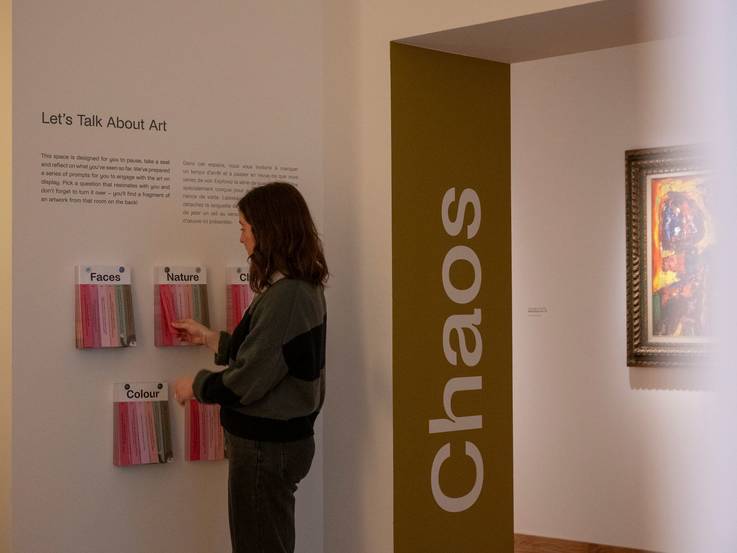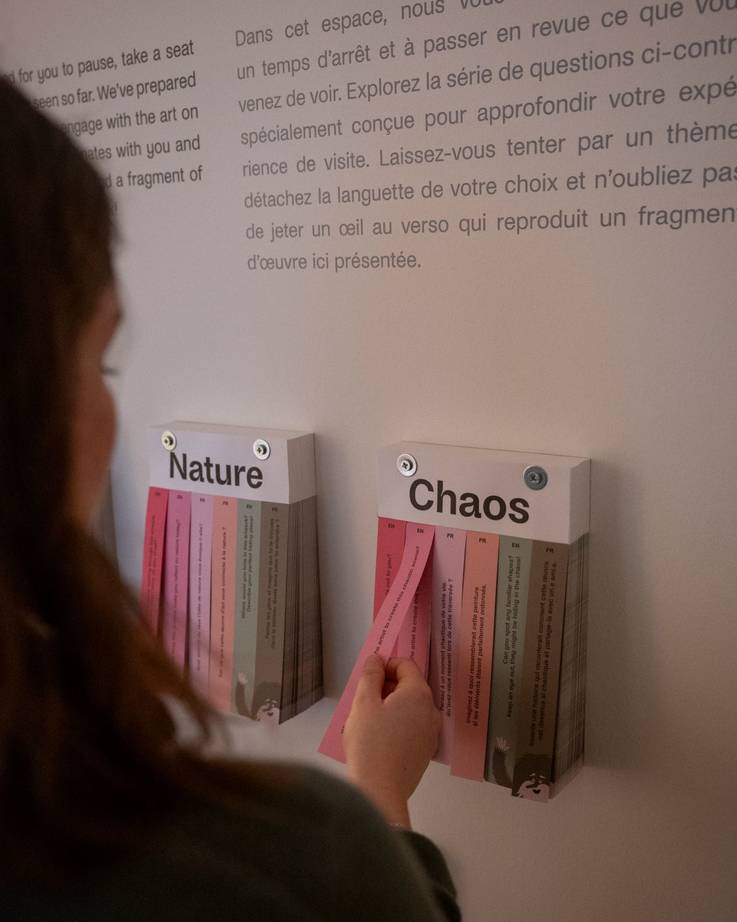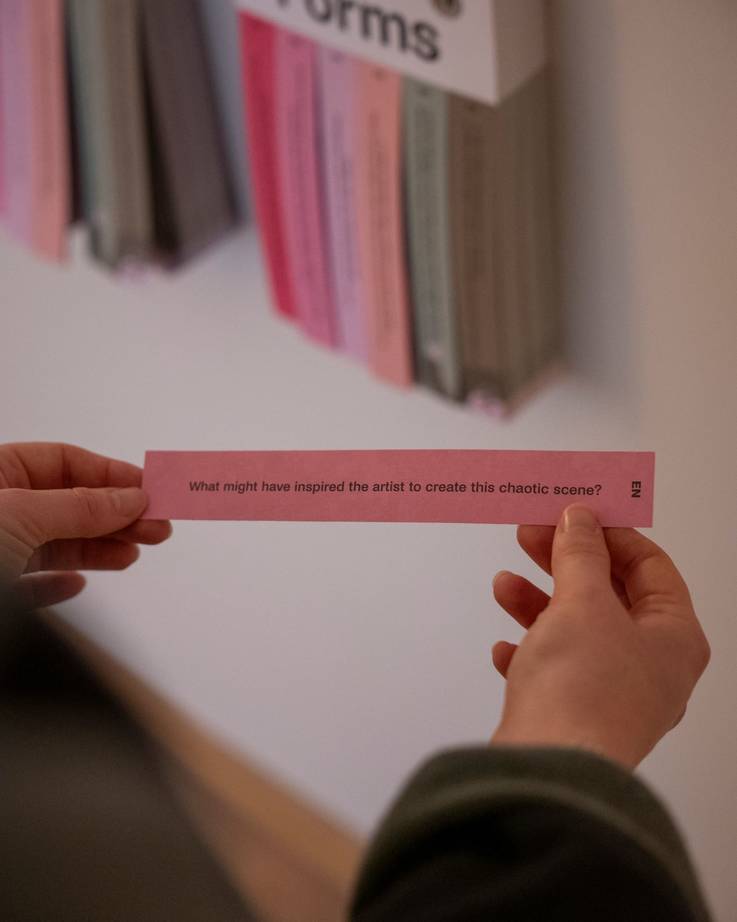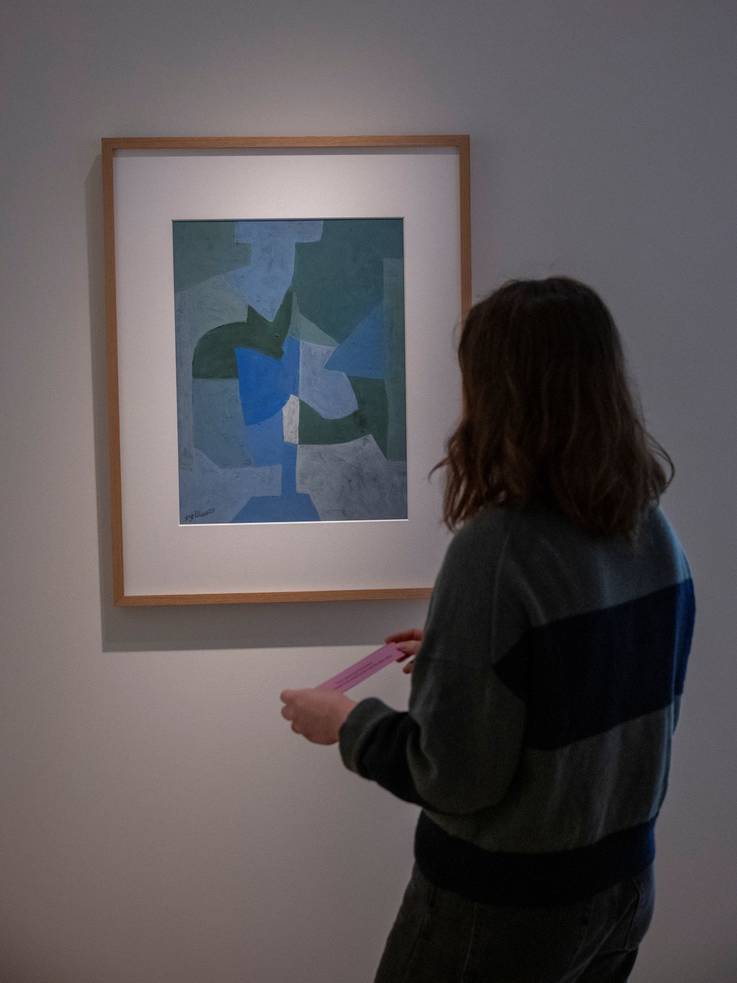An invitation to ask questions about modern and contemporary art.

Modern and contemporary art can sometimes feel intimidating or overwhelming, and people often think they have to have specialised knowledge to be able to “decode” or appreciate abstract, experimental or provocative art. As important as it is to consider the context in which a work was created, given that every piece is shaped by its historical and socio-cultural background as well as by the works that came before or after it, it’s equally important to remember that everyone, regardless of their knowledge of art, can engage with these works.
Art is meant to be experienced. The way it’s perceived is always subjective and informed by the unique perspective of each viewer. People bring their own emotions and background to a work of art, meaning that two individuals can respond to the same piece in completely different ways. This emphasises the personal nature of engaging with art, whereby perception is not fixed, but co-defined by the artwork and the viewer’s individual frame of reference. For instance, someone in love might engage with a particular piece quite differently from someone navigating personal loss, much as a child’s perception will differ from that of an adult. In this regard, art isn’t always something to be “understood” in a single, definitive way. Rather, it offers a space for a multitude of perspectives.

PICK A QUESTION!
It’s within this context that we recently created a new space in our permanent exhibition of modern and contemporary art, specifically designed to encourage visitors of all ages to engage with and reflect on the works on display. In a small connecting room between the galleries, we’ve added five pads with tear-off strips which explore the exhibition‘s key themes: Faces, Nature, Chaos, Colour and Forms & Shapes. The front of each strip features a question, with a fragment of an artwork from the corresponding gallery on the back.
Visitors are invited to pick a question, use the image on the back to locate the work and let the question guide their observation and interaction with the piece. While the questions often directly relate to the artwork depicted on the strip, they also apply to other pieces in the same room, stimulating broader reflection and discussion about the exhibition’s content. The audience is encouraged to consider how artists from different eras, backgrounds and disciplines have addressed different themes, as well as how their own perceptions and experiences as viewers shape their observations.
We also created a series of new bookmarks inspired by these questions which are now available in our museum shop, alongside a fresh set of postcards depicting selected works from the show. Designed by studio mado klümper, who was behind the exhibition design and campaign, these small souvenirs give visitors a chance to take a piece of the experience home. And who knows, they might even keep the conversation about art going long after the museum visit.

THE ART OF ASKING QUESTIONS
The guiding principle of this new interactive space is asking questions. There is no single, definitive answer to the questions we present. Instead, they’re designed to encourage visitors to tap into their own capacity for critical reflection and dialogue, without the need for any prior knowledge of art. The focus is on the act of questioning itself, inviting people to engage with the art on their own terms. This approach allows for a more critical reading of the work, recognising the viewer as an active participant in the process of shaping meaning.
Modern and contemporary art doesn’t offer simple answers, nor should it. Its value often lies in its ambiguity and complexity, with multiple layers of meaning juxtaposed, challenging the notion of an absolute truth or a definitive response. The goal is not to provide straightforward answers, or to find the “right” answer to the question, but to foster curiosity and reflection through subjective perception and to embrace the open-ended nature of these questions and the conversations they spark.

FINDING NEW WAYS OF ENGAGING WITH YOUNG VISITORS
To reach a wider range of age groups, we felt it was important to include questions for younger audiences in the space as well. These questions feature our friendly museum mascot, Wulles, making them easy to spot. We also offer kid-friendly labels in our Supports/Surfaces show. With its experimental use of materials and colours, this exhibition about the French avant-garde movement naturally lends itself to more playful approaches.
To make our museum more accessible for families, we also offer kids guides for most of our temporary exhibitions. These booklets include fun activities which encourage children to actively engage with the artworks on display while exploring their own creativity. Each guide comes with a free set of colouring pencils. Looking ahead, we hope to offer similar kids labels and guides in all our displays, from Old Masters to modern and contemporary art, as well as art from Luxembourg, ensuring our collection stays engaging and relevant to visitors of all ages. Lis Hausemer The modern and contemporary art section of the Nationalmusée um Fëschmaart, also known as Collections/Revelations, is free to visit at any time.
Text: Lis Hausemer - Photos: Éric Chenal
Source: MuseoMag N° I - 2025
